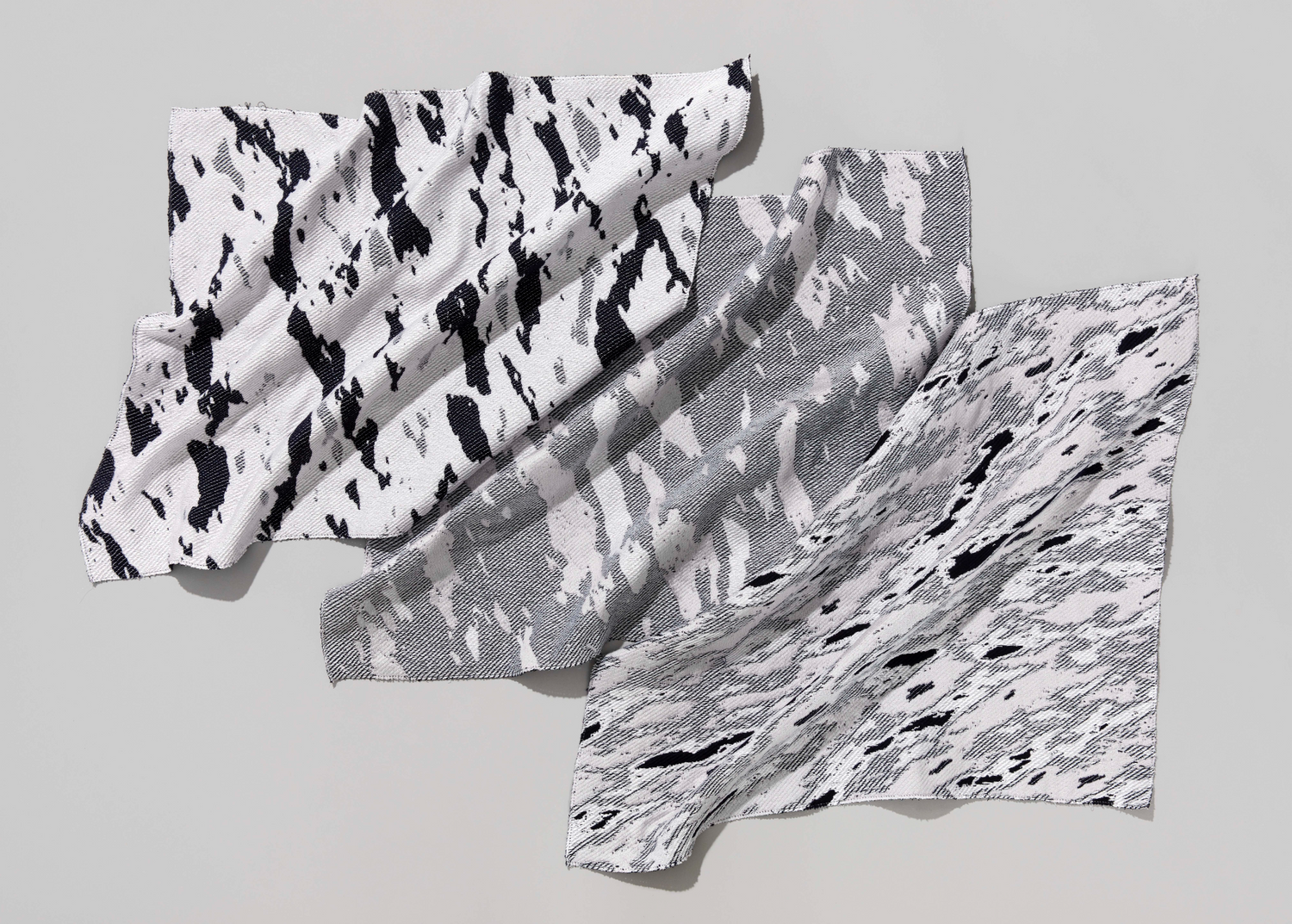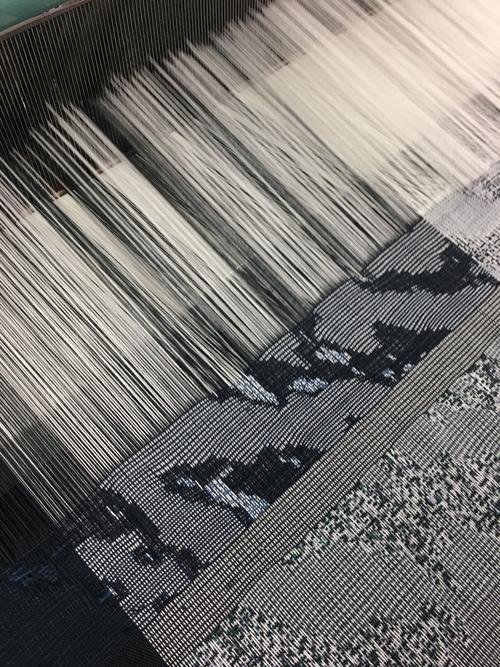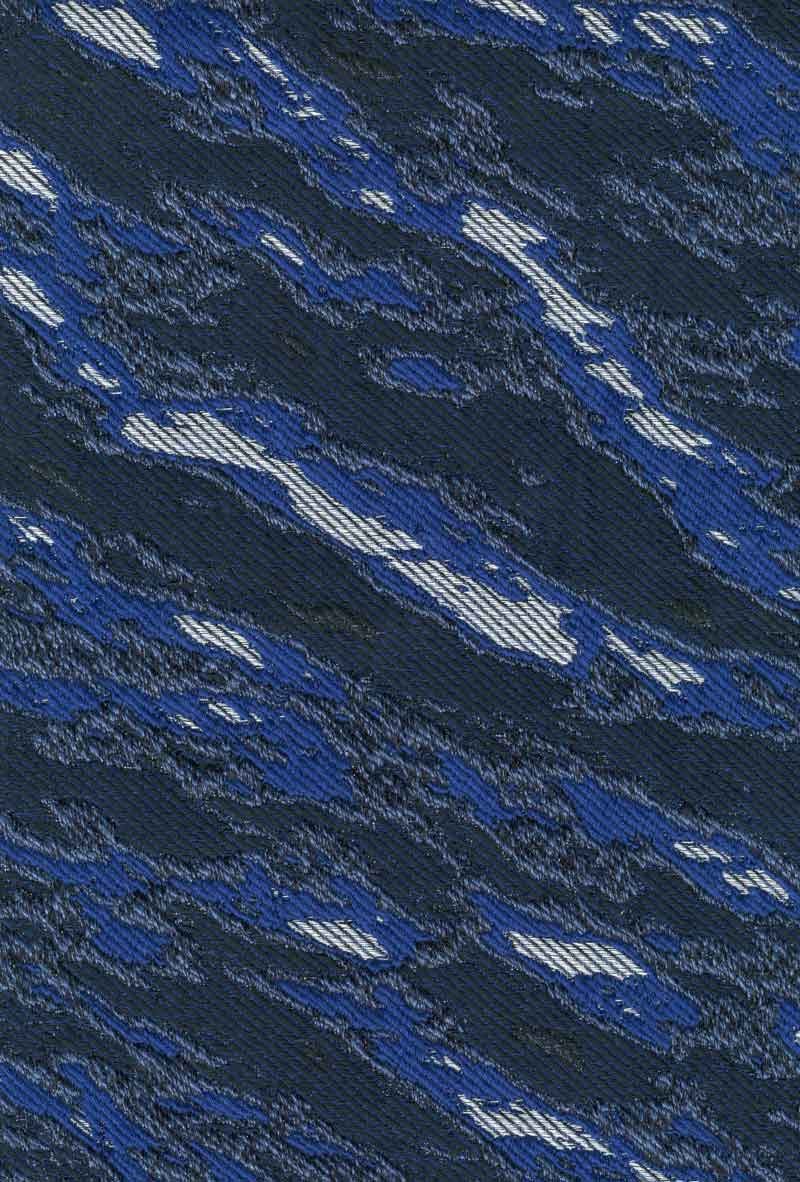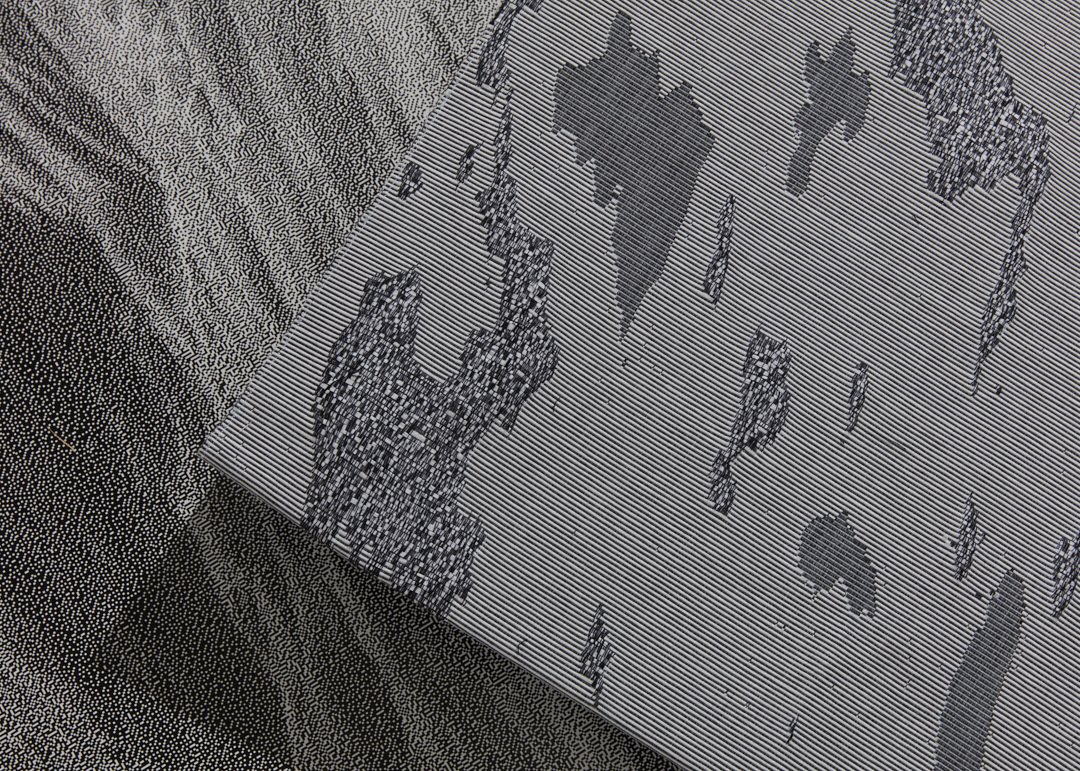Aliki van der Kruijs & Jos Klarenbeek
Kadans 2.0
“How can the motion of the sea be a direct source for an ever-changing weaving pattern?”
Aliki van der Kruijs is a designer and researcher working primarily with textiles. Her deep interest in climate and geology strongly inspires her textile work, presenting environmental data about a specific area and landscape.
The Dutch designer has developed an archive of rain-made fabrics with patterns produced with the help of rainy conditions. In addition, she made a series of fabrics using atmosphere and contextual research as input for colour and material collections.
Jos Klarenbeek is a mathematician with a multidisciplinary approach to object creation. He has gathered planetary datasets from NASA and the European Space Agency to make custom maps for his research projects — from the dairy production chain to global temperature charts.
Aliki and Jos had been compiling environmental and textile data for years before they met. Together, the two designers developed the ongoing project Kadans 2.0 in 2017.
Kadans 2.0 by Aliki van der Kruijs and Jos Klarenbeek











